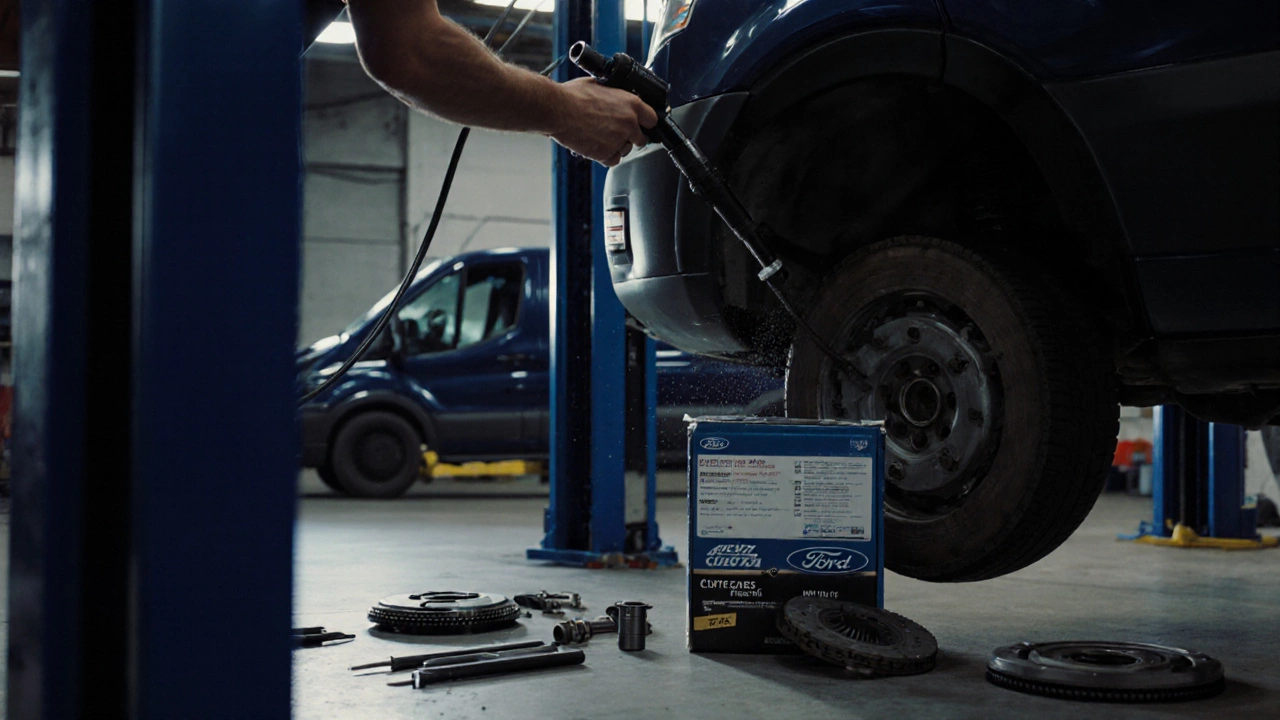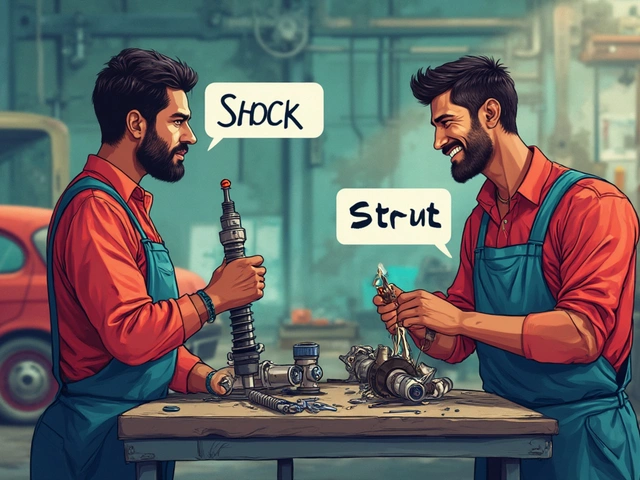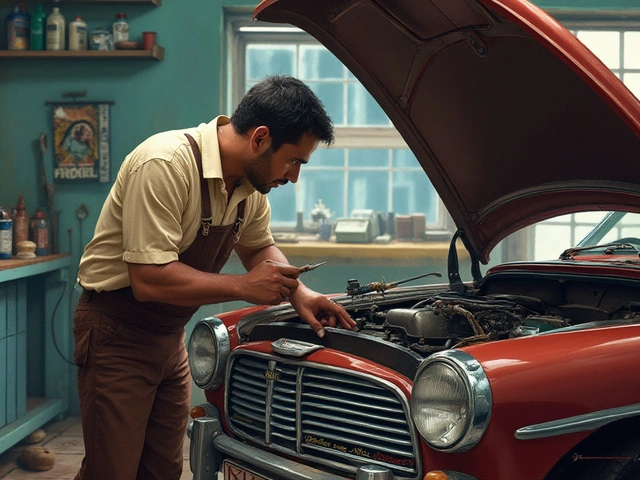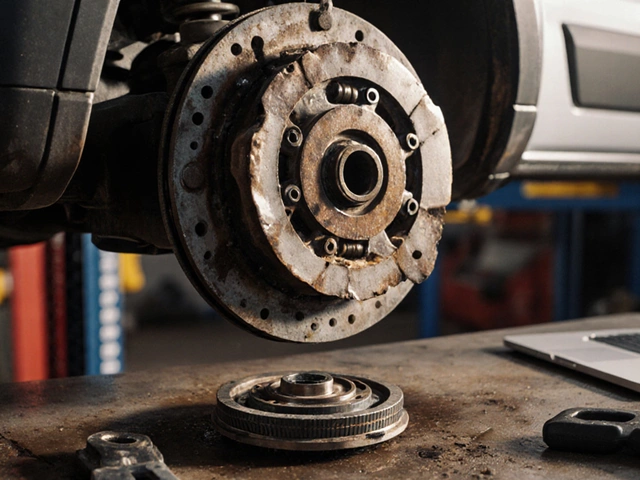
Clutch Lifespan Estimator
How Long Will Your Clutch Last?
Calculate your clutch's expected lifespan based on real-world UK driving conditions and vehicle type.
Most drivers assume their clutch will last the life of the car. But that’s not how it works. A clutch isn’t a set-it-and-forget-it part. It’s a wear item-like brake pads or tires-and how long it lasts depends on how you drive, what you drive, and where you drive it. In the UK, where stop-start city traffic and hilly roads are common, clutches often wear out faster than you’d expect. So how many miles should a clutch last? The short answer: between 60,000 and 100,000 miles. But that number means little without context.
What Determines Clutch Life?
Not all clutches are made the same. A clutch in a 2018 Ford Fiesta with a 1.0L EcoBoost engine won’t last as long as one in a 2020 Toyota Hilux with a 2.8L diesel. The engine’s torque output, transmission type, and vehicle weight all play a role. But even more important is driving style.
Drivers who ride the clutch-keeping their foot lightly on the pedal while waiting at traffic lights-wear it out in under 30,000 miles. Same with those who pop the clutch to get moving quickly, or use the clutch to hold the car on hills instead of the brake. These habits turn friction material into dust. In Bristol, where steep roads like Park Street and Clifton Down are common, hill starts are unavoidable. Doing them right means using the handbrake, not the clutch, to prevent rolling back.
Heavy loads also kill clutches. Towing a caravan, hauling tools in a van, or regularly carrying five adults and luggage? That’s extra strain on the clutch every time you accelerate. A clutch designed for a 1,200kg hatchback isn’t built for 2,000kg of combined weight. Many commercial drivers see clutch failure by 40,000 miles-not because the part is faulty, but because it was pushed beyond its design limits.
Typical Clutch Lifespan by Vehicle Type
Here’s what you can realistically expect based on common UK vehicles:
| Vehicle Type | Average Mileage | Common Issues |
|---|---|---|
| Small hatchback (e.g., VW Polo, Ford Fiesta) | 60,000-80,000 miles | Slipping under load, hard shifting |
| Family saloon (e.g., Toyota Corolla, Honda Civic) | 80,000-100,000 miles | Gradual slipping, burning smell |
| Performance car (e.g., Ford Focus ST, Volkswagen Golf GTI) | 40,000-70,000 miles | Aggressive driving, frequent launches |
| Light commercial van (e.g., Ford Transit Custom, Vauxhall Vivaro) | 50,000-70,000 miles | High torque, frequent stop-start |
| Heavy-duty diesel (e.g., Toyota Hilux, Land Rover Defender) | 100,000+ miles | Durable design, but wear from towing |
These numbers aren’t guesses. They come from data collected by UK garage networks like Kwik Fit and Halfords over the past five years. The average clutch replacement at a reputable garage in the West Country happens around 78,000 miles. That’s the real benchmark.
Signs Your Clutch Is Wearing Out
Waiting until it fails completely is expensive. A slipping clutch can leave you stranded on the M5 or A417. Watch for these early warning signs:
- Slipping - The engine revs rise but the car doesn’t speed up, especially when accelerating hard or going uphill.
- Burning smell - A sharp, acrid odor like overheated plastic or burnt toast. This isn’t oil-it’s friction material breaking down.
- Hard pedal - You have to press the clutch all the way to the floor to get into gear. That means the clutch isn’t disengaging properly.
- Grinding or clunking - Noise when shifting, especially into first or reverse. Could mean worn synchros, but often linked to clutch misalignment.
- Unusual pedal feel - The pedal feels spongy, or engages too high or too low. That’s a sign of hydraulic issues or worn release bearing.
If you notice one or two of these, don’t panic. But if you’re seeing three or more, it’s time to get it checked. A mechanic can inspect the clutch without removing it-using a borescope camera through the inspection hole on the bellhousing. Most garages in Bristol offer this as a free diagnostic.
Clutch Kits: What’s Included and Why It Matters
When you replace a clutch, you’re not just swapping the disc. A proper clutch kit includes:
- Clutch disc - The friction surface that connects engine to transmission.
- Pressure plate - Applies force to clamp the disc against the flywheel.
- Release bearing - Pushes against the pressure plate when you press the pedal.
- Slave cylinder or hydraulic components - Especially if the system is old or leaking.
- Alignment tool - Often overlooked, but critical for smooth engagement.
Some cheap kits skip the release bearing or use low-grade materials. That’s why a £150 clutch kit from a discount online store might fail at 20,000 miles, while a £300 OEM-spec kit lasts 80,000. Don’t cut corners on the clutch. It’s the most expensive transmission component to replace-and labor costs are high because the gearbox has to come off.
How to Extend Your Clutch’s Life
You can’t avoid driving, but you can drive smarter:
- Use the handbrake on hills, not the clutch.
- Don’t rest your foot on the pedal while driving.
- Shift smoothly-no sudden jerks when engaging gear.
- Avoid ‘riding’ the clutch in traffic. If you’re stopped for more than 20 seconds, put the car in neutral.
- Don’t use the clutch to control speed on downhill slopes-use engine braking or the brake pedal.
- Keep the clutch hydraulic fluid clean. Replace it every 40,000 miles or every 3 years, whichever comes first.
These habits add years to your clutch. One customer in Bath replaced his clutch at 120,000 miles on his 2011 BMW 3 Series-just by changing his driving habits after a 60,000-mile failure.

When to Replace Your Clutch
Don’t wait for it to fail. If your clutch is approaching 70,000 miles and you’re noticing any of the warning signs above, schedule a check. Clutch failure is rarely sudden-it’s gradual. By the time you can’t pull away from a junction, you’ve already damaged the flywheel or input shaft. Replacing those adds £400-£700 to the bill.
Plan ahead. If your car is over 8 years old and you’re planning a long trip, get the clutch inspected. It’s cheaper than being towed from the M4.
Clutch Replacement Cost in the UK (2025)
Labour takes 4-6 hours because the gearbox must be removed. Parts vary by car:
- Basic hatchback (e.g., Renault Clio) - £450-£650 total
- Family car (e.g., Ford Focus) - £600-£850 total
- Performance or SUV (e.g., Subaru Forester) - £800-£1,200 total
- Commercial van (e.g., Mercedes Sprinter) - £900-£1,400 total
Prices in Bristol are typical for the South West. Always get a written quote that includes parts, labour, and disposal fees. Ask if the quote includes a new flywheel-if it’s worn, it must be replaced. Some garages offer a 2-year warranty on clutch kits, which is worth paying extra for.
Final Thoughts: It’s Not About the Mileage-It’s About the Use
A clutch can last 120,000 miles or 30,000. The difference isn’t luck-it’s how you treat it. If you drive gently, avoid unnecessary stress on the transmission, and keep up with basic maintenance, your clutch will outlive your warranty. But if you treat it like a switch rather than a precision component, you’ll pay for it-big time.
There’s no magic number. But if your clutch is approaching 70,000 miles and you’ve noticed any slipping, burning smells, or strange pedal behaviour, don’t ignore it. A small check now saves a big repair later.
Can a clutch last 150,000 miles?
Yes, but only under ideal conditions. Drivers of diesel hatchbacks or light commercial vehicles who drive gently, avoid heavy loads, and never ride the clutch can hit 120,000-150,000 miles. It’s rare, but it happens. Most vehicles hit their limit before then.
Does driving in the city wear out a clutch faster?
Absolutely. Stop-and-go traffic means constant clutch engagement and disengagement. Every time you creep forward in traffic, you’re wearing down the friction material. City drivers often see 20%-30% less clutch life than highway drivers.
Is it worth replacing just the clutch disc?
No. When the clutch disc wears out, the pressure plate and release bearing are also near the end of their life. Replacing just the disc saves money upfront but leads to premature failure again. Always replace the full kit.
Can a bad clutch damage the gearbox?
Yes. A slipping or misaligned clutch puts extra stress on the input shaft and synchros. If you drive with a worn clutch for too long, you can crack gears or damage the transmission. That’s far more expensive than a clutch replacement.
Should I replace the flywheel when replacing the clutch?
If your car has a dual-mass flywheel (DMF)-common in diesel cars from 2005 onward-it should be replaced every time the clutch is changed. DMFs wear out and can cause vibrations or noise. A solid flywheel might be reusable if it’s in good condition, but always have it inspected.





